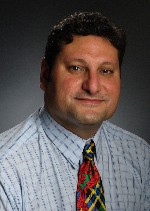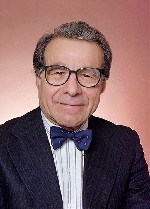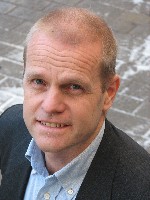Technology Strategy and the United Nations
Monday, 22 September 2008, 8:30–10:00 (MacLeod Hall ABC)
Ibrahim Gedeon, TELUS
 |
Every technology introduced has overhead (entitlements). Support organizations such as operations, technology strategy, legal, contracts, product development, planning, design, care and others. Financial commitments such as capital allotment and maintenance. Biography—In his role as chief technology officer at TELUS, Ibrahim Gedeon is responsible for technology strategy, architecture and network support systems for the Consumer and Business Solution covering wireless and wireline technologies. A key part of his role is working with lead customers on new services and innovations. |
Professors' Forum - Wireless Futures
Monday, 22 September 2008, 18:00–19:30 (MacLeod Hall ABC)
Lajos Hanzo, Gerhard Fettweis, Gordon Stüber
|
The standardization of the Third-Generation Partnership Project's Long-Term Evolution (LTE) initiative has reached a state of maturity and further advances are well under way towards the LTE-Advanced initiative. Three-dimensional (3D) spreading constituted by a combination of Direct-sequence (DS) spreading in the Time-Domain (TD), Frequency-Domain (FD) spreading across the sub-carriers of multi-carrier modems and Spatial-Domain (SD) spreading across multiple transmit antennas result in a significantly lower-complexity receiver design than their single-dimensional counterparts. Numerous other potential developments will be discussed during the panel, including the benefits of MIMOs and cooperation, implementational aspects, coherent, versus non-coherent detection, synchronization, etc. Biography—The four basic types of MIMOs encompass space-time coding (STC), spatial division multiplexing (SDM), spatial division multiple access (SDMA) and beam-forming. Their challenging reception scenarios are encountered in the so-called rank-deficient situations, when the number of receivers is lower than the number of transmitters, which requires powerful non-linear sphere decoders, radial basis function assisted, Minimum Bit Error Ratio (MBER) detectors or Genetic Algorithm (GA) aided detectors - just to highlight a few. This evening-panel will briefly touch upon a variety of avant garde hybrid MIMO designs to set out a range of promising future research directions, including the innovative combinations of the above-mentioned four MIMO types, leading to the concept of Multi-Functional Antenna Arrays (MFAAs). |
Cognitive Radio: Research Challenges
Tuesday, 23 September 2008, 8:00–9:00 (MacLeod Hall ABC)
Simon Haykin, McMaster University
 |
In a relatively short time span, cognitive radio has established itself as an exciting multidisciplinary research project with significant potential for making a difference to wireless communications. In this lecture, I will describe the progress that I have made in advancing certain aspects of research into cognitive radio with emphasis on robustness and scaling: Biography—Simon Haykin received his B.Sc. (First-class Honours), Pgh.D., and D.Sc., all in Electrical Engineering from the University of Birmingham, England. He is a Fellow of the Royal Society of Canada, and a Fellow of the Institute of Electrical and Electronics Engineers. He is the recipient of the Henry Booker Medal from 2002, the Honorary Degree of Doctor of Technical Sciences from ETH Zentrum, Zurich, Switzerland, 1999, and many other medals and prizes. |
Current Technology Trends and Future Challenges in Mobile Broadband
Wednesday, 24 September 2008, 8:00–9:00 (MacLeod Hall ABC)
Jan Färjh, Ericsson Research
 |
Mobile broadband has taken off and today's networks, terminals and subscription-rates are in place which has increased data traffic dramatically in the mobile networks. Technology will continue to evolve which will affect and give many opportunities for innovation in the area of communication. In the presentation some examples of current technology trends and future challenges will be given. Biography—Jan Färjh, Vice President Head of Ericsson Research, took his M.Sc in telecommunication at the Royal Institute of Technology in Stockholm, 1985. After his graduation he developed signal processing algorithms for airborne radar systems. In 1990 he joined Ericsson and started to work with radio access technologies. He was part of Ericsson's first activites in WCDMA and became manager of the unit responsible for radio access research in 1996. The research performed in this unit has contributed to the evolution of WCDMA, HSPA and 3G LTE. In 2007 he became Head of Ericsson Research. |

